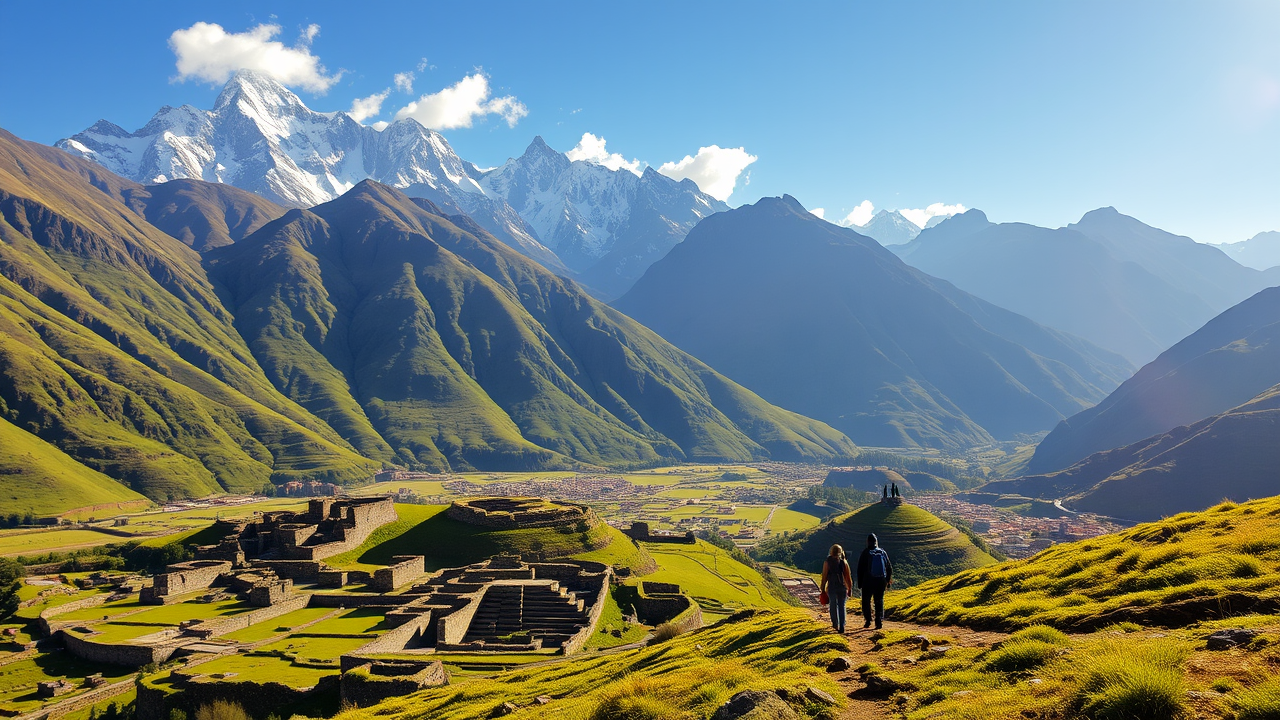Trekking in the Andes of Peru offers one of the most exciting and memorable adventures for outdoor enthusiasts and nature lovers alike. With its towering mountains, ancient ruins, vibrant culture, and stunning landscapes, the Andes provide a perfect backdrop for a range of trekking routes that cater to various levels of experience and interests. If you’re someone eager to experience authentic adventure tourism while immersing yourself in the rich history and natural beauty of Peru, then this guide is here to help you plan your trek in the Andes.
The Andes Mountain Range and Its Allure
Stretching over 7,000 kilometers along the western edge of South America, the Andes are the longest continental mountain range in the world. In Peru, this range is home to some of the most breathtaking peaks, lush valleys, and archaeological sites. The Andes are not just about elevation; they also encompass diverse ecosystems, from snow-capped summits to dense forests and high-altitude deserts.
Why Trekking in the Andes Is a Must-Do
Trekking in the Andes offers more than just physical challenge—it’s a chance to explore a region steeped in history and culture. From the fascinating Inca ruins to traditional villages where indigenous communities still thrive, the Andes combine natural beauty with cultural richness. The experience allows you to step back in time, see stunning landscapes, and connect with nature in a meaningful way.
Popular Trekking Routes in the Andes of Peru
- The Inca Trail
No list of Andean treks would be complete without mentioning the Inca Trail. This legendary route spans approximately 43 kilometers and typically takes four days to complete. The trail begins in the Sacred Valley and culminates at the awe-inspiring Machu Picchu.
Walking the Inca Trail is an adventure like no other. You’ll traverse lush jungles, pass through ancient stone arches, and climb steep Inca staircases. The trail is dotted with archaeological sites, including Wiñay Wayna and Inti Punku (Sun Gate), providing a glimpse into the ancient Inca civilization.
Permits are required for the Inca Trail, and because of its popularity, it’s essential to book well in advance. The trek is physically demanding but incredibly rewarding, offering breathtaking views of the surrounding mountains and a sense of walking through history.
- Salkantay Trek
If you’re looking for an alternative to the Inca Trail with equally stunning scenery, the Salkantay Trek is a fantastic choice. This five-day trek covers around 72 kilometers and passes through varied landscapes like snow-capped peaks, tropical forests, and high-altitude plains.
The highlight of this route is the majestic Mount Salkantay, one of the highest peaks in the region. Trekkers get to enjoy panoramic views, hot springs, and visit the archaeological site of Llactapata. The Salkantay Trek also offers a bit more flexibility in permits and crowds.
- Inca Jungle Trek
For adventure seekers looking for a mix of trekking and adrenaline activities, the Inca Jungle Trek is perfect. Over four days, you’ll hike through rugged jungle trails, then get the chance to zip-line, bike, or try river rafting.
This route is less crowded and gives a more off-the-beaten-path experience. It also offers spectacular views of the lush Amazon basin and passes through traditional villages, providing insights into local cultures.
Tips for Preparing for Your Trek
- Physical Fitness: Most treks in the Andes are physically demanding due to high altitudes. Incorporate cardio workouts, hiking practice, and acclimatization days into your plan.
- Proper Gear: Invest in good hiking boots, layered clothing, waterproof jackets, and plenty of sunscreen. A hat and sunglasses are essential for protection from the sun.
- Altitude Acclimatization: Spend a couple of days in Cusco or Sacred Valley before starting your trek to help your body adjust.
- Hydration and Nutrition: Stay hydrated and eat nutritious meals during your trek to maintain energy levels.
- Local Guides and Permits: Always trek with authorized guides and arrange necessary permits in advance to ensure safety and compliance.
Cultural and Natural Highlights
Besides the physical challenge, trekking in the Andes introduces you to spectacular natural sights such as the Sacred Valley, Rainbow Mountain, and the glacial lakes of Humantay and Salkantay. Each trek offers a view into the diverse ecosystems of the region.
Cultural encounters are equally enriching. Traverse traditional villages, meet local Quechua speakers, and witness ancient ceremonies performed at remote ruins. These cultural touches make your trekking experience even more profound.
Travel Tips and Practical Advice
- Best Time to Trek: The dry season from May to September offers clear skies and stable weather.
- Permits and Bookings: Reserve your permits for the Inca Trail early, and book tours with reputable operators.
- Health Precautions: Be aware of altitude sickness; carry medication and consult your doctor beforehand.
- Packing Checklist: Include essentials like a sleeping bag, headlamp, insect repellent, snacks, and personal medication.
In Conclusion
Trekking in the Andes of Peru is not just about conquering mountains; it’s about discovering a land filled with history, vibrant cultures, and stunning landscapes. Whether you choose the famous Inca Trail, the adventurous Salkantay Trek, or the exciting Inca Jungle route, each offers a unique way to experience the magic of the Andes.
Prepare well, respect the environment and local communities, and open yourself to the adventure of a lifetime. The mountains are waiting to tell their stories—are you ready to listen and explore?

Leave a Reply